#detective di: the silk road murders
Text





''... time is fading. the wolf is on the move. calamity is upon the flower and the flesh, the gold and the gate''
- detective di: the silk road murders (2019)
#gamingedit#detective di: the silk road murders#di renjie#detective di#detective di the silk road murders#this game was sooo good. loved it#myedits*
29 notes
·
View notes
Text
SVT’s Jeonghan: Love, War and Everything Between || prologue

—
Fic Piece Written by: Admin Grandma of @springday-aus
Moodboard Link: Created by Admin Grandpa
Character Pairing Y/N [fem. reader] and Seventeen’s Yoon Jeonghan
Other Characters: Nu’est’s Baekho [known as Dongho], Seventeen [Seungcheol and Jisoo, along with idiot squad!Soonyoung, Seokmin, and Seungkwan], and more to be added along the way!
Genre: historical, romance, drama, royal!au, arranged marriage!au + gender role reversal
None of this historically accurate. It is purely fiction!
Type: series
part 01 || part 02 || part 03 → to be available! check the progress on our upcoming page!
Word Count: approx. 1.4k
Plot Summary: Korea’s most distinguished military general arrives home, carrying back glory and honor from the war. However, the general has been revealed to be a woman! Due to the prominent military accomplishments you have made as the highest ranking general, by orders of the Empress, you are arranged to be married to the second-eldest prince, Yoon Jeonghan. Only one problem lies between you two: your reputation as a ruthless killing machine, which scares the living daylights out of your new husband.
→ Inspired by: the Chinese drama called Oh My General (also known as General Above I Am Below)
Warnings: graphic violence, glorified war, murder, sexual harassment, sex discrimination (mainly against women), poly-relationships (i.e. concubines), political corruption, and homosexual tendencies

Chaos.
War.
The two are practically one in the same—at least, in the context of a battlefield.
The wind continues to blow softly, tracing along the blades of the grass and lightly brushing the dust off from the dry patches on the land. In the sky, Korea’s flag flutters, with its colors reflecting onto the ground from the skylight, and the stand is firmly grasped in Dongho’s hands.
The sun radiates throughout the field, shining against the bright blue armor of your soldiers and the highlands that stretch out. The hills go on for miles—not even you could detect another city in sight, meaning civilians are safe from harm.
It’s a clear field, you note. Open land is best for battles—it means there is a lesser chance of traps from those who have higher ground and even less of an opportunity for sneak attacks.
Despite this fact, you remain on guard. There is no telling as to what can happen because, one wrong move and everything, and anything, can easily fall apart.
The silence is deafening as you and your army await for the enemy.
A familiar shout is heard from across the field. The ground trembles as their cavalry arrives, but you and your men stand your ground. Many soldiers in armor, embellished with bright red and yellow silks, start to fill the landscape. They halt within three miles away and part for the man himself, General Yang.
He sits on his horse, looking with nothing short of arrogance with a smug smirk tugged on his lips. With a draw of his sword, he lets out a roar with his men. You, on the other hand, are unable to hide your irritation at their behavior.
“General!” he shouts. The opposition quieted down. He continues. “It’s an honor to meet you on the battlefield once more! However, it is a shame that nothing can save you now!”
“General Yang!” you greet. “Let’s skip the pleasantries! Only one will survive and it will not be you!” Without looking back at your soldiers, you give your command. “Anyone who retreats will be beheaded on the spot!”
“Yes, General!”
The archers stretch their bows; the foot soldiers aim the cannons and Dongho passes your ax. The drummers pound the drums.
“CHARGE!”
Everything blurs as your foot soldiers charge themselves forward, swiftly moving past you with their swords drawn. The hooves pound against the ground and battle cries are heard from all directions. Metal clashes with metal; screams of pain and agony are ring throughout. They eventually stop—their bodies falling still, with gaping stab wounds that are beyond repair.
Despite being surrounded by the chaos, you can only focus on General Yang himself—who is growing angrier as his men begin to fall, one by one. Without hesitation, he charges towards you. With a kick of your heel, your horse starts up and accelerates its speed—its rein on one hand and your ax firmly grasped in the other. The wind blows against your face, dancing along with the fabric that peaks shyly from underneath your armor. You easily slaughter those in enemy colors who block your pathway, leaving countless men dead at the mercy of your feet.
The two of you meet towards the center, circling around as the bloodbath occurs in the background. Yang’s head is held high and his hand has a strong grip on his sword, which is drawn towards you.
“General (Y/L/N),” he says with baring teeth. “Today is the day you will die.”
You smirk at his brash statement. “How foolish of you to assume a devil can die.”
His snarl only grows before swiftly swinging his sword towards your direction. You easily dodge his swing, leaning your back onto the horse and letting the wind blow past. He manages to thrust the sword again, only for it to be collided with your ax. He tries to aim towards your hands, in a pathetic attempt to push the weapon out of your hand, but fails to do so. Repeatedly.
Your ax scrapes against his sword, blocking every hit he directs towards you. Having known him for the past six months—at least, in battle—you know his techniques. He’s such a caveman, so impulsive; ah, men... they really are too simple of creatures.
Your smirk grows at his miserable attempt to dominate over you. With one twist of your wrist and a shove from your shoulder, his sword rolls out of his grasp and falls onto the ground. In one swift motion, you point your ax directly to his chest and pull out the sword from the side, pressing it against his jawline—giving it a small nick, just because you can.
“You can surrender and survive,” you say. “Or you can continue this ridiculous war and lose your life.”
His jaw clenches, trying to keep his breath calm. “Never. I refuse to be with the losing side.”
“Oh, Yang,” you say. “Dying as you lived: prideful.”
“Men have pride and honor.”
“And the same pride and honor shall be the cause of your downfall.”
With those words, you pierce your ax into his chest and watch as he stills. Within a second of your attack, you rip the weapon out of his chest and slice his neck for reassurance. He falls off his horse and hits the ground with a grunt, spitting out the blood that blocks his airways. He struggles to keep his breath steadily; eventually, he falls once more and his entire body stills.
His second-in-command, who spots his general on the ground, immediately provides orders.
“RETREAT! THE GENERAL IS DOWN!” He pulls on his horse, turning himself and the other soldiers, the ones who are still alive, back to their home base. “RETREAT!”
You sit perfectly still on your horse, watching the enemy all flee like the cowards they are. No one attempts to even look at you—nevertheless, aim towards you. Dongho returns to your side and, without a word, takes the bloody sword out of your hand.
As they continue to flee, you hear the familiar drum beat echo throughout the field—slowly getting louder and louder as the field empties. You raise your battle ax and your men cheer in the sweet, sweet victory.
With one hand up, they are silenced.
“Do not forget the fellow soldiers who have fallen. We shall honor their memory with this victory. But, with this, we must remember: the battle may be over, but the war has not been won.”
“Yes, General!”
You turn to Dongho. “Let’s head back to celebrate.”
He smiles in response. “Let’s go home.”

The news of General (Y/L/N)’s success travels quickly, getting to the city’s capital as soon as possible, while the military were on their way back. The messenger races against time, swiftly moving across the country, galloping on his horse to get the message to the King.
On the other hand, in the heart of the city’s capitol, the King sits on his throne, which is located above the officials. His mother, the Empress, sits behind him—practically hiding behind a curtain of gold that cuts her off from the others in the gathering room. While she may have more experience and wisdom, she is still just a woman.
They were currently trying to figure out how to solve the natural disaster issues that had struck earlier this week. The flood had struck all at once a couple of days ago and the King found himself in a disadvantageous position, primarily with the citizens of Seoul who were demanding answers. The officials weren’t of any help either; each of them were simply trying to benefit themselves.
The King rubs his temple as the officials endlessly argue over who should be taxed and where the money should be going: the villagers or the palace?
With all this noise, he cannot think.
Almost as if it was an answered prayer, the messenger arrives on his horse at the door. As he steps off and heads into the room, practically running down the aisle. The officials’ chatter dies down.
The messenger bows, holding out the news in his hands. “Greetings to your majesty.”
“Accepted, proceed.”
He straightens up, opening the scroll to present to the King, along with the officials. “I bring news from the battlegrounds. We have won another battle and General Yang has been killed.”
The crowd of officials murmur amongst themselves, practically in shock from the success. Even the King is pleasantly surprised. While your family has an excellent military lineage, you have certainly outdone yourself.
“However,” the messenger continues, before anyone can celebrate prematurely. “General (Y/L/N) advises to keep an eye on the Chinese military since about half of Yang’s army have still survived, including his military council. Until then, the general and his army are currently on the road back to the capital.” He bows towards the King once more, before making his exit towards his horse to alert the others at their original home base.
Once the messenger clears, a high-ranking official, Official Kwon, steps out from the left. “Your majesty.”
“Accepted, proceed.”
“Because you have promoted General (Y/L/N) to his position, we have successfully taken back control of our borders. What would you like for us to focus on next?”
His majesty lets out a small sigh, slightly tilting his back further into the seat as he ponders. “We need to strategize ourselves politically,” he says. “Surely, King Wu will want to arrange a meeting soon. The question I pose is about how we shall approach it.”
A mid-ranking official, Official Chun, steps out from the right, keeping distance from Official Kwon. “Your majesty.”
“Accepted, proceed.”
“I suggest we wait for the invitation,” he says. “If he suggests a meeting, I recommend that we have the meeting at our palace and prepare the soldiers for a possible attack.”
Another high-ranking official, Official Song, steps out from the left. “Your majesty.”
“Accepted, proceed.”
“Official Chun is correct because we should prepare for a counter-attack. However, he is also wrong because we might focus too much on our capital and that could lead to the endangerment of the border.”
Chun, in silent response, gives Song a side-look that is nothing short of annoyance.
The King nods silently, awaiting for any other ideas the officials might want to contribute to the conversation. The officials’ heads remain bowed down, anticipating for the King’s response.
“Song is correct,” he says. “We must prepare ourselves for any possible attack.” He pauses. “However, we should wait for General (Y/L/N) and Military Counselor Kang to arrive, before we officially decide.”
“Your majesty,” Official Kwon says.
“Accepted, proceed.”
“Since the general and counselor are returning after three years, shall we prepare a parade in their honor?”
“Yes, we shall,” the King says. “After all, these two have sacrificed themselves for our country. A parade is the least we can do.” He lets out a sigh; the others are unsure if it’s one of relief or apprehension. “Because, without those two men, I am afraid of what the consequences may be.”

A/N: As always, thank you for reading the prologue! If you want to know about updates, please check the upcoming page!
#admin grandma#grandma writings#writings#series#love war and everything between#love war and everything between: prologue#historical#arranged marriage#romance#war and violence#seventeen#seventeen imagines#seventeen scenarios#yoon jeonghan#jeonghan imagines#jeonghan scenarios#royal!au#royal!jeonghan#lweb!au#lweb!jeonghan#group: seventeen#member: yoon jeonghan
40 notes
·
View notes
Photo

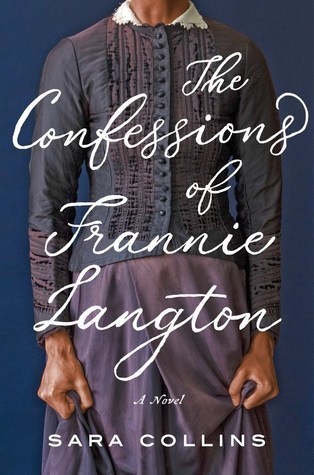





Gothic Mysteries: a reading list
The Confessions of Frannie Langton by Sara Collins
A servant and former slave is accused of murdering her employer and his wife in this astonishing historical thriller that moves from a Jamaican sugar plantation to the fetid streets of Georgian London--a remarkable literary debut with echoes of Alias Grace, The Underground Railroad, and The Paying Guests.
All of London is abuzz with the scandalous case of Frannie Langton, accused of the brutal double murder of her employers, renowned scientist George Benham and his eccentric French wife, Marguerite. Crowds pack the courtroom, eagerly following every twist, while the newspapers print lurid theories about the killings and the mysterious woman being held in the Old Bailey.
The testimonies against Frannie are damning. She is a seductress, a witch, a master manipulator, a whore.
But Frannie claims she cannot recall what happened that fateful evening, even if remembering could save her life. She doesn’t know how she came to be covered in the victims’ blood. But she does have a tale to tell: a story of her childhood on a Jamaican plantation, her apprenticeship under a debauched scientist who stretched all bounds of ethics, and the events that brought her into the Benhams’ London home—and into a passionate and forbidden relationship.
Though her testimony may seal her conviction, the truth will unmask the perpetrators of crimes far beyond murder and indict the whole of English society itself.
Stalking Jack the Ripper by Kerri Maniscalco, James Patterson
Presented by James Patterson's new children's imprint, this deliciously creepy horror novel has a storyline inspired by the Ripper murders and an unexpected, blood-chilling conclusion...
Seventeen-year-old Audrey Rose Wadsworth was born a lord's daughter, with a life of wealth and privilege stretched out before her. But between the social teas and silk dress fittings, she leads a forbidden secret life.
Against her stern father's wishes and society's expectations, Audrey often slips away to her uncle's laboratory to study the gruesome practice of forensic medicine. When her work on a string of savagely killed corpses drags Audrey into the investigation of a serial murderer, her search for answers brings her close to her own sheltered world.
The Truth of All Things by Kieran Shields
Two hundred years after the Salem witch trials, in the summer of 1892, a grisly new witch hunt is beginning....
When newly appointed Deputy Marshal Archie Lean is called in to investigate a prostitute's murder in Portland, Maine, he's surprised to find the body laid out like a pentagram and pinned to the earth with a pitchfork. He's even more surprised to learn that this death by "sticking" is a traditional method of killing a witch.
Baffled by the ritualized murder scene, Lean secretly enlists the help of historian Helen Prescott and brilliant criminalist Perceval Grey. Distrusted by officials because of his mixed Abenaki Indian ancestry, Grey is even more notorious for combining modern investigative techniques with an almost eerie perceptiveness. Although skeptical of each other's methods, together the detectives pursue the killer's trail through postmortems and opium dens, into the spiritualist societies and lunatic asylums of gothic New England.
Before the killer closes in on his final victim, Lean and Grey must decipher the secret pattern to these murders--a pattern hidden within the dark history of the Salem witch trials.
A Hold on Me by Pat Esden
She never wanted to return.
He wants nothing more than for her to leave.
But the fire between them is as strong as the past that haunts them.
Annie Freemont grew up on the road, immersed in the romance of rare things, cultivating an eye for artifacts and a spirit for bargaining. It's a freewheeling life she loves and plans to continue--until her dad is diagnosed with dementia. His illness forces them to return to Moonhill, their ancestral home on the coast of Maine--and to the family they left behind fifteen years ago, after Annie's mother died in a suspicious accident.
Once at Moonhill, Annie is shocked when her aunt separates her from her father. The next time Annie sees him, he's a bizarre, violent shadow of his former self. Confused, she turns to an unlikely ally for support--Chase, the dangerously seductive young groundskeeper. With his dark good looks and powerful presence, Chase has an air of mystery that Annie is irresistibly drawn to. But she also senses that behind his penetrating eyes are secrets she can't even begin to imagine. Secrets that hold the key to the past, to Annie's own longings--and to all of their futures. Now, to unlock them, she'll have to face her greatest fears and embrace her legacy…
The Forbidden by F.R. Tallis
1873: When the ambitious Doctor Paul Clement takes a job on the island of Saint Sebastien, he has dreams of finding cures for tropical diseases. After witnessing the ritualistic murder of a young boy who was allegedly already dead, he is warned never to speak of what he has seen. Back in fin de siecle Paris, Paul's attentions turn to studying the nervous system and resuscitation through electricity. Paul is told of patients who have apparently died, been brought back to life, and, while they lay between life and death, witnessed what they believed to be Heaven itself. Using forbidden knowledge he swore never to use, he attempts to experience what everyone else has seen, but something goes horribly wrong. When Paul returns to the land of the living, can it be possible that he brings something else back with him, an unspeakable evil so powerful it can never be banished?
House of Secrets by V.C. Andrews
Ever since Fern could remember, she and her mother have lived as servants in Wyndemere House, the old Gothic mansion of the Davenport family. She may have been a servant, but Fern developed a sweet friendship with Dr. Davenport's son, Ryder, and she was even allowed free range of the estate.
But Dr. Davenport has remarried and his new wife has very different ideas about a servant's place. Now Fern and her mother are subject to cruel punishments, harsh conditions, and aren't even allowed to use the front door.
Yet, for all her wrath, the cruel woman cannot break the mysterious bond between Ryder and Fern. And when Ryder invites Fern to join his friends at prom, there's nothing Mrs. Davenport can do to stop them nor can she continue to guard the secret that haunts the women of Wyndemere—but there's nothing she won't try.
After all, reputation is everything.
#mystery#mystery books#new adult#YA books#book recs#reading recommendations#library#reading list#currently reading#tbr#romance#fiction#gothic fiction#new adult books#reading recs#mysteries
6 notes
·
View notes
Link
The Serial killer Thomas Neill Cream was born on May 27th 1850 in Glasgow.
The Cream family emigrated to Canada in 1854. His father, William, became the manager of a lumber and shipbuilding firm in Quebec and was successful enough to send Thomas to McGill University in Montreal.
At McGill, Thomas studied medicine with an emphasis on pharmaceuticals. He graduated in 1876 after completing a thesis on the effects of chloroform. After getting a woman pregnant and then aborting the fetus, he took off for England the day after marrying the unfortunate lady. He continued his medical studies in London and Edinburgh before returning to Canada where he carried on a lucrative business in providing abortions.
In late 1878 he returned to Canada and set up practice in London, Ontario, where he was implicated in the murder of a new patient, Kate Gardener. Gardener was unmarried and pregnant at the time and had gone to Cream for an abortion, she was later found dead in a nearby woodshed which smelled strongly of chloroform. At her inquest, Cream admitted having been consulted by Gardener but said he had refused to help with the abortion and suggested she must have taken her own life. He alleged that she was pregnant by a prominent local businessman. As there was no bottle found near the corpse, and the face was badly scratched as though she had been trying to remove a mask or pad, the inquest ruled that she had been murdered.
Cream was not tried due to insufficient evidence. However, his reputation was ruined, and he moved shortly afterwards to Chicago to practice as a physician. He was based near a red light district and offered terminations to prostitutes. He was quickly suspected by the Chicago police of being an illegal abortionist. In 1880 he was charged with the death of an abortion patient, Mary Ann Faulkner, but escaped prosecution through lack of evidence.
Cream also marketed his own anti-pregnancy pills and one patient, Ellen Stack, died of strychnine poisoning. Again, Cream was not brought to justice through lack of evidence. In 1881 he almost got away with poisoning Daniel Stott, a patient whose wife he had seduced. But Cream felt compelled to contact the District Attorney, maintaining that the chemist who had made up the pills he had prescribed for Stott had added strychnine to them. When the District Attorney ordered the exhumation of Stott’s body, it was found to contain strychnine and the finger of suspicion pointed at Cream not the blameless chemist leading him to be charged with murder. At his trial he received a life sentence but as a result of bribery he ended up serving only ten-year prison term in Illinois’ Joliet State Penitentiary.
On his release in July 1891 and after a brief period in Canada with his relatives he moved back to the Britain. From September 1891 he lodged at 103 Lambeth Palace Road, London, where he resumed his deadly career. Despite a three-month trip back to Canada, in the six months to 12 April 1892 he murdered four prostitutes: Ellen Dosworth, Matilda Clover, Emma Shrivell and Alice Marsh. Going under the name of Dr Neill of St Thomas’ Hospital, and wearing his usual attire of a top hat and a silk lined cloak, Cream would befriend his victims and offer medication laced with strychnine, supposedly to clear up rashes or spots.
However, Cream again incriminated himself. He blamed the murders on Walter Harper, a medical student and fellow lodger, and wrote to Harper’s father demanding £150 to destroy some supposed evidence. He also pestered the police with his theories as to the identity of the murderer and even wrote under different pseudonyms to a coroner implicating Harper and Frederick Smith M.P. Smith also received a letter asking for £3,000 to destroy some supposed evidence.
Other blackmail letters were sent to Dr William Broadbent of Portland Square and Lord Russell. Cream, using his false name Neill, got chatting with a former New York Detective John Haynes at a photographic studio. Haynes became worried by the amount of detail that Cream was relaying about the murders, including the names of two victims who had not been associated with the poisonings. The next day Haynes spoke to his Metropolitan Police friend Inspector Patrick McIntyre about Neill/Cream.
Subsequently Cream was followed and the police sent enquiries to Canada and Chicago. One of the ‘new’ victims mentioned by Neill/Cream was a woman called Louise Harvey. However, Harvey was not dead – she had sensed that there was something wrong with Cream and had pretended to swallow the pills he had given her.
Cream was initially charged with attempted extortion and a mass of evidence, including seven bottles of strychnine, was collected from his lodgings. He was eventually charged with the murder of Matilda Harper. The jury took only 12 minutes to establish his guilt and he was hanged on 15 November 1892.
There is an unsubstantiated claim that seconds before the trap door opened and Cream made the last drop he confessed to being Jack the Ripper but he was in a Canadian prison at the time of those murders, this hasn't stopped his name being constantly linked with the murders. Their theory is a bit far fetched, apparently he had a doppelganger serving his sentence in Canada!
Read the full story of the man they called The Lambeth Poisoner on the link at the top
12 notes
·
View notes
Text
The Word Is Murder
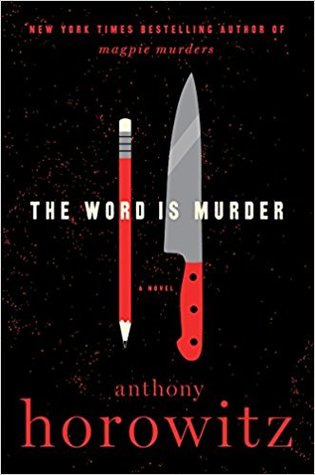
Description ;
One bright spring morning in London, Diana Cowper – the wealthy mother of a famous actor - enters a funeral parlor. She is there to plan her own service.
Six hours later she is found dead, strangled with a curtain cord in her own home.
Enter disgraced police detective Daniel Hawthorne, a brilliant, eccentric investigator who’s as quick with an insult as he is to crack a case. Hawthorne needs a ghost writer to document his life; a Watson to his Holmes. He chooses Anthony Horowitz.
Drawn in against his will, Horowitz soon finds himself a the center of a story he cannot control. Hawthorne is brusque, temperamental and annoying but even so his latest case with its many twists and turns proves irresistible. The writer and the detective form an unusual partnership. At the same time, it soon becomes clear that Hawthorne is hiding some dark secrets of his own.
https://www.goodreads.com
The Author;
Anthony Horowitz, OBE is ranked alongside Enid Blyton and Mark A. Cooper as "The most original and best spy-kids authors of the century." (New York Times). Anthony has been writing since the age of eight, and professionally since the age of twenty. In addition to the highly successful Alex Rider books, he is also the writer and creator of award winning detective series Foyle’s War, and more recently event drama Collision, among his other television works he has written episodes for Poirot, Murder in Mind, Midsomer Murders and Murder Most Horrid. Anthony became patron to East Anglia Children’s Hospices in 2009.
On 19 January 2011, the estate of Arthur Conan Doyle announced that Horowitz was to be the writer of a new Sherlock Holmes novel, the first such effort to receive an official endorsement from them and to be entitled the House of Silk.
https://www.goodreads.com
Criticism;(By Erik Spanberg)
Forget about the wonders of Sherlock Holmes and James Bond. What this reader wants to know is when, or whether, Anthony Horowitz ever sleeps.Horowitz, aptly described on his website as a polymath, is that and more. The British writer counts Holmes and Bond as iconic characters whose literary legacies he has expanded into the 21st century, earning kudos from readers and reviewers alike. That’s a mere fraction of his creative output, though.Teen readers know Horowitz for his "Alex Rider" adventure novels, spanning 11 books and 19 million copies sold. He’s also the creator of the long-running British detective series “Foyle’s War,” set during World War II and, later, the Cold War.More recently, Horowitz has focused on stand-alone mystery novels aimed at adults. Last summer brought “The Magpie Murders,” a mash-up of Agatha Christie-style whodunit with affectionate tweaks of the clubby world of British publishers, editors, and authors.And now comes “The Word Is Murder,” a bit of meta-fiction told by a writer named Anthony Horowitz, whose works include a couple of Sherlock Holmes novels, the "Alex Rider" series, and “Foyle’s War” on TV. This alter-Horowitz encounters a former British detective – a consultant on a series called "Injustice” starring James Purefoy (everything but the former detective being true to life) – who wants Horowitz to write a nonfiction account of his investigative methods.The former detective, Daniel Hawthorne, irritates and frustrates narrator Horowitz at almost every turn. But the fictional version of Horowitz, probably much like the author himself, can’t resist a great story. Or, rather, the potential for a great story.Hawthorne hooks Horowitz with a whopper of a set-up: He’s helping the police look into a most unusual murder, committed days earlier.A woman named Diana Cowper, healthy and in her 60s, entered a London funeral parlor, where she planned and paid for her own future service, picking out the music and readings while imploring the funeral director to make sure her funeral doesn’t drag on too long when the day comes.Six hours later, she’s dead, strangled with a red curtain cord. Two days after that, Diana Cowper’s corpse comes to light, discovered by her housekeeper.As Horowitz writes, “Think about it. Nobody arranges their own funeral and then gets killed on the same day.”It’s an intriguing story. And it gnaws at Horowitz even as he tells Hawthorne he has no interest in writing true crime. Horowitz insists he’s a novelist and TV writer, a creator who revels in controlling his stories with the latitude fiction affords.Which means Horowitz is absolutely going to collaborate with Hawthorne despite his disdain for the blunt-spoken, often secretive police consultant.And, Horowitz discovers, Hawthorne might be annoying, cheap, and gruff, but he has a knack for getting people to reveal important details.“He came across as ordinary, even obsequious,” Horowitz writes, describing the other Horowitz’s initial impressions. “The more I got to know him, the more I saw that he did this quite deliberately. People lowered their guard when they were talking to him. They had no idea what sort of man he was, that he was only waiting for the right moment to dissect them.”For a portion of the novel, Horowitz and the reader alike don’t know why Hawthorne left the police. All that’s known is the police fired him for unknown reasons after 10 years as a murder investigator.Those circumstances led to a second career as a consultant on TV crime procedurals and the occasional, discrete freelance job helping the police with difficult cases. Hawthorne tells Horowitz one of the down sides to his part-time investigations is there just aren’t enough murders to keep him gainfully employed.The Cowper case, though, proves worthy of his time – and Horowitz’s. Beyond the eerie and all-but-impossible coincidence of her death, Diana Cowper, it turns out, was the mother of a fast-living Hollywood movie star. And, to further complicate matters, Diana Cowper, 10 years earlier, while driving in a seaside town in England, got behind the wheel without her glasses and ran over twin 8-year-old boys who darted into the road. One of the boys died and the other suffered permanent injuries. The boys’ parents were shattered and remain embittered over the accident, especially since Diana Cowper avoided jail and any significant punishment.These threads, along with a drama school rivalry involving Diana Cowper’s future movie star son, provide more than enough material for Horowitz to feint this way and that before revealing the killer and, just as important, the killer’s motivations.Much like “The Magpie Murders,” Horowitz succeeds with “The Word Is Murder” by simultaneously adhering to and defying the rules of a traditional mystery. As for the mystery of how Horowitz keeps turning out so much good work in such short order, it’s hard to say. Especially when confronted with this piece of news: In Horowitz’s native England, his second Ian Fleming estate-endorsed James Bond novel, “Forever And A Day,” has just been published and is earning solid reviews.
https://www.csmonitor.com
1 note
·
View note
Photo

RIPPER STREET SEASON 2 - EPISODE 5 - THREADS OF SILK & GOLD - Historical Reference case
In 1889, the year in which this scandal takes place, it is legal for girls aged 12 and boys aged 14 to marry (with parental consent). Most people started work at the age of 6 (or younger) to help support their families and men had a life expectancy of just 40-45 years of age. Male homosexuality was illegal and punishable, if convicted of buggery, to penal servitude for life or for any term of not less than ten years. The death penalty for buggery had only recently been abolished in 1861.
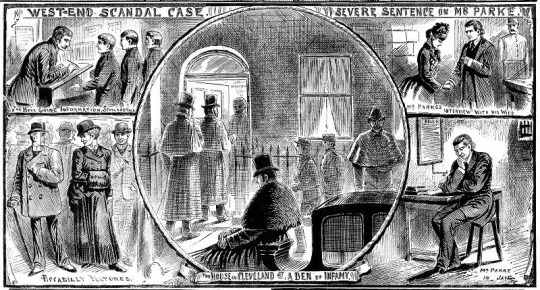
Towards the end of the nineteenth century a gentleman by the name of Charles Hammond ran a male brothel located at No 19 Cleveland Street in London, just north of Oxford Street near Tottenham Court Road.
Hammond catered for a largely aristocratic clientele and for a number of years the existence of his establishment remained unknown to the authorities.
This all changed on 4th July 1889 when a 15 year old telegraph boy called Charles Swinscow was searched as part of an ongoing investigation into money theft at his employers, the General Post Office.
It was a telegraph boys job to cycle around London delivering telegrams and urgent messages to homes and businesses. His wage would have been about eleven shillings per week, however when he was searched, eighteen shillings were found in his pockets, more than a weeks salary to such a young man. Swinscow was taken in for questioning as part of the police operation.
When asked how he came to have such a large sum of money in his possession, Swinscow panicked and confessed he'd been recruited by Charles Hammond to work at a house in Cleveland Street where, for the sum of four shillings a time, he would permit the brothel's clients to "have a go between my legs" and "put their persons into me".
He then identified a number of other young telegraph boys who were also renting themselves out in this manner at the Cleveland Street establishment, leading to the apprehension and questioning of Henry Newlove, Algernon Allies and Charles Thickbroom.
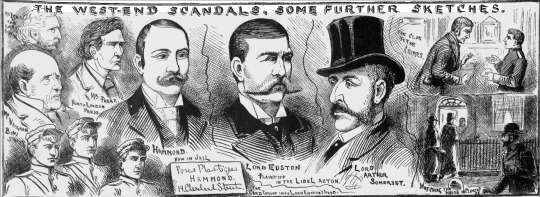
After The Arrests
The officer in charge of the case was Chief Inspector Frederick Abberline, famous for being in charge of the detectives investigating the Jack-The_Ripper murders a year earlier in 1888
Abberline procured a warrant to arrest Charles Hammond on a charge of conspiracy to "to commit the abominable crime of buggery", but when officers went to Cleveland Street, they found that Hammond had already absconded.
The police made arrangements to observe the comings and goings at No 19 Cleveland Street in case Hammond returned. They noted that a 'Mr Brown' called at the address on the 9th and 13th July 1889, later identified by both Swinscow and Thickbroom on the 25th July as one of the their clients.
Police followed Mr Brown back to army barracks in Knightsbridge where he was formally identified as Lord Arthur Somerset, younger son of Henry Charles Somerset, the 8th Duke of Beaufort. Lord Arthur was a Major in the Royal Horse Guards and equerry to Edward, Prince of Wales, who later became King Edward VII.
Papers were sent to the Director of Public Prosecutions with a view to prosecuting Lord Arthur on a charge of gross indecency. The Prince of Wales was incredulous when he heard of it
"I won't believe it, any more than I should if they accused the Archbishop of Canterbury" he said.
Despite this gesture of support, Lord Somerset placed the matter in the hands of his solicitor Arthur Newton.
Newton contacted the DPP and mentioned that if his client were to be prosecuted, he might have to name Prince Albert Victor, the Duke of Clarence, as another brothel client whilst giving his evidence in court.
Given that Prince Albert Victor was the eldest son of the Prince of Wales and second in line to the throne, it was clear that the government would not want his name associated with the homosexual brothel at Cleveland Street.
The authorities appeared to drag their heels over the matter, delaying the court case, which allowed Lord Arthur Somerset the opportunity to flee abroad. By the 18th October 1889 he was safely in Boulogne, France. He remained in exile for the remainder of his life and eventually died on the French Riviera in 1926.
But whilst Somerset escaped prosecution, the same could not be said of the unfortunate 'rent boys' caught up in the investigation. Swinscow together with Henry Newlove, Algernon Allies and Charles Thickbroom were brought before the Old Bailey in September 1889 and charged with gross indecency. All were convicted. Newlove received a sentence of four months with hard labour whilst the others each got nine months.
This might have been the end of the story had it not been for a journalist named Ernest Parke, who ran a story on 28th September 1889 in the 'North London Press', claiming that the "heir to a duke and the younger son of a duke" had frequented Cleveland Street.
Again, on the 16th November 1889 Parke went so far as to name both Arthur Somerset and Henry James Fitzroy, the Earl of Euston, as the men in question and dropped a broad hint to his readers that a member of the royal family was also involved, referring to a gentleman "more distinguished and more highly placed".
Ernest Parke believed that it was safe to name the two young aristocrats as they had both fled the country. He was correct as far as Lord Arthur Somerset was concerned, but the Earl of Euston was not in Peru as Parke thought, but still in England. In order to defend his reputation, Henry James Fitzroy felt obliged to bring a charge for criminal libel against Edward Parke.
The trial was heard at the Old Bailey on the 19th January 1890. Whilst Henry James Fitzroy admitted that he had been to 19 Cleveland Street, he claimed that it was all a mistake. According to his own testimony, he had only gone there after being given a card touting a 'tableaux plastique' (nude women) at the address, and that once he realised the true nature of the establishment, had made his excuses and left.
Ernest Parke however produced a witness named John Saul (AKA Jack Saul), who went into some detail describing the kind of services that he had provided for Henry James Fitzroy at the Cleveland Street brothel. Being a self-confessed prostitute, Saul's evidence was easily 'discredited' and Ernest Parke was found guilty of libel without justification and sentenced to one year's imprisonment with hard labour.
One more trial was to arise as a result of the Cleveland Street scandal in respect of the activities of Arthur Newton, defence solicitor to the aforementioned Arthur Somerset who, it was believed, had helped Somerset evade justice. Newton was brought before the court on the 12th December 1889 and charged with conspiracy to pervert the course of justice for allegedly interfering with witnesses and arranging their disappearance to France.
He was convicted but received the relatively mild punishment of six weeks in prison. He was even allowed to resume his legal practice, representing the author and playwright Oscar Wilde in own trial for gross indecency with other men five years later in 1895.
This was still not quite the end of the matter as the MP Henry Labouchère, a noted campaigner against 'homosexual vice', who had earlier been responsible for including the offence of 'gross indecency' within the Criminal Law Amendment Act 1885, became convinced that some kind of 'cover-up' had been launched by the authorities.
On the 28th February 1890 he tried to persuade Parliament to establish a committee to investigate the whole affair, but his motion was defeated by a vote of 204 to 66. Henry felt so strongly on the matter that he became over animated during the debate on his motion and he was suspended from Parliament for a week.
Thus the Cleveland Street Scandal passed into history and ceased to be a matter of contemporary significance, however, from evidence that has since become available, it now appears that the Duke of Clarence was indeed a likely client of the Cleveland Street brothel. If indeed it were true, it would be very likely that some kind of damage limitation exercise was carried out at the highest levels of the British Government to protect him.
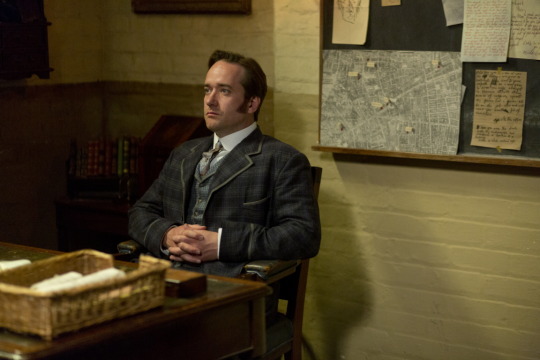
RIPPER STREET S2E5 - EDMUND REID: "We have our obligations, but our work today... I begin to think a law that makes a crime of human love will police itself in pure... despair."
90 notes
·
View notes
Text

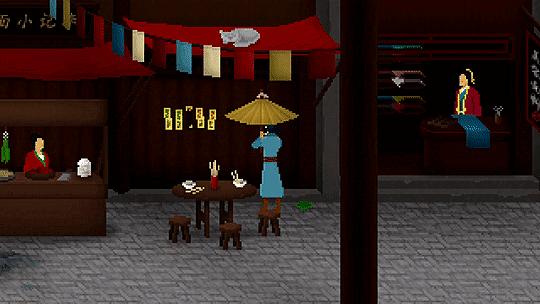
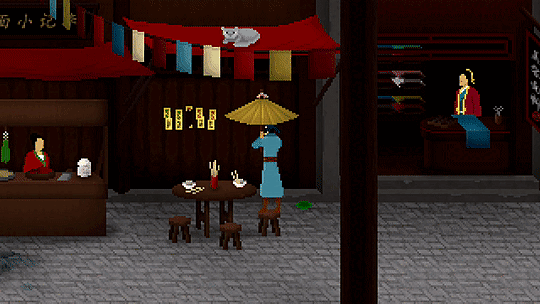
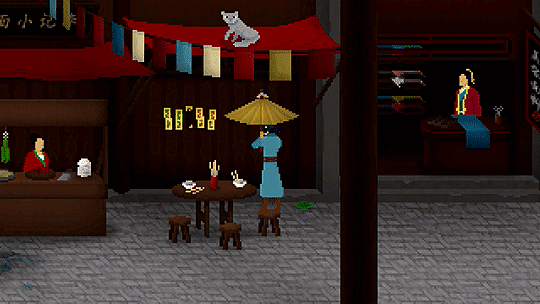
#gamingedit#detective di#detective di: the silk road murders#di renjie#detective di the silk road murders#myedits*
12 notes
·
View notes
Text

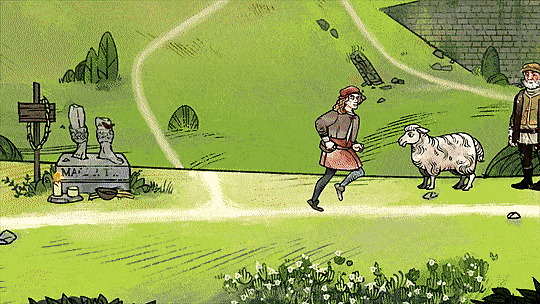







games i completed and loved in order in 2023;
life is strange: true colours // pentiment // teacup // no longer home // werewolf: the apocalypse - heart of the forest // tell me why // detective di: the silk road murders // hogwarts legacy // pillars of eternity 2: deadfire - ultimate edition
#gamingedit#videogameedit#vgedit#videogamesedit#video games#lettss''sss fuckiinngg gooooo a lovely year in personal gaming#i'll say pentiment was my fav vg experience of the year. it was absolutely lovely going through that#off on vacation and will be back to try something new from next year cos i JUST completed poe2 and need a break. happy :')#hl and poe2 took up most of my time.. xbox wrapped said i have just over 500 hours in. those 2 account for the bulk of it; 170+ each ooof#myedits*
2 notes
·
View notes
Link
The Scottish born serial killer Thomas Neill Cream was born on May 27th 1850 in Glasgow.
The Cream family emigrated to Canada in 1854. His father, William, became the manager of a lumber and shipbuilding firm in Quebec and was successful enough to send Thomas to McGill University in Montreal.
At McGill, Thomas studied medicine with an emphasis on pharmaceuticals. He graduated in 1876 after completing a thesis on the effects of chloroform. After getting a woman pregnant and then aborting the fetus, he took off for England the day after marrying the unfortunate lady. He continued his medical studies in London and Edinburgh before returning to Canada where he carried on a lucrative business in providing abortions.
In late 1878 he returned to Canada and set up practice in London, Ontario, where he was implicated in the murder of a new patient, Kate Gardener. Gardener was unmarried and pregnant at the time and had gone to Cream for an abortion, she was later found dead in a nearby woodshed which smelled strongly of chloroform. At her inquest, Cream admitted having been consulted by Gardener but said he had refused to help with the abortion and suggested she must have taken her own life. He alleged that she was pregnant by a prominent local businessman. As there was no bottle found near the corpse, and the face was badly scratched as though she had been trying to remove a mask or pad, the inquest ruled that she had been murdered.
Cream was not tried due to insufficient evidence. However, his reputation was ruined, and he moved shortly afterwards to Chicago to practice as a physician. He was based near a red light district and offered terminations to prostitutes. He was quickly suspected by the Chicago police of being an illegal abortionist. In 1880 he was charged with the death of an abortion patient, Mary Ann Faulkner, but escaped prosecution through lack of evidence. Cream also marketed his own anti-pregnancy pills and one patient, Ellen Stack, died of strychnine poisoning. Again, Cream was not brought to justice through lack of evidence. In 1881 he almost got away with poisoning Daniel Stott, a patient whose wife he had seduced. But Cream felt compelled to contact the District Attorney, maintaining that the chemist who had made up the pills he had prescribed for Stott had added strychnine to them. When the District Attorney ordered the exhumation of Stott’s body, it was found to contain strychnine but the finger of suspicion pointed at Cream not the blameless chemist and he was charged with murder. At his trial he received a life sentence but as a result of bribery he ended up serving only ten-year prison term in Illinois’ Joliet State Penitentiary.
On his release in July 1891 and after a brief period in Canada with his relatives he moved back to the UK. From September 1891 he lodged at 103 Lambeth Palace Road, where he resumed his deadly career. Despite a three-month trip back to Canada, in the six months to 12 April 1892 he murdered four prostitutes: Ellen Dosworth, Matilda Clover, Emma Shrivell and Alice Marsh. Going under the name of Dr Neill of St Thomas’ Hospital, and wearing his usual attire of a top hat and a silk lined cloak, Cream would befriend his victims and offer medication laced with strychnine, supposedly to clear up rashes or spots.
However, Cream again incriminated himself. He blamed the murders on Walter Harper, a medical student and fellow lodger, and wrote to Harper’s father demanding £150 to destroy some supposed evidence. He also pestered the police with his theories as to the identity of the murderer and even wrote under different pseudonyms to a coroner implicating Harper and Frederick Smith M.P. Smith also received a letter asking for £3,000 to destroy some supposed evidence. Other blackmail letters were sent to Dr William Broadbent of Portland Square and Lord Russell. Cream, using his false name Neill, got chatting with a former New York Detective John Haynes at a photographic studio. Haynes became worried by the amount of detail that Cream was relaying about the murders, including the names of two victims who had not been associated with the poisonings. The next day Haynes spoke to his Metropolitan Police friend Inspector Patrick McIntyre about Neill/Cream. Cream was followed and the police sent enquiries to Canada and Chicago. One of the ‘new’ victims mentioned by Cream was a woman called Louise Harvey. However, Harvey was not dead – she had sensed that there was something wrong with Cream and had pretended to swallow the pills he had given her.
Cream was initially charged with attempted extortion and a mass of evidence, including seven bottles of strychnine, was collected from his lodgings. He was subsequently charged with the murder of Matilda Harper. The jury took only 12 minutes to establish his guilt and he was hanged on 15 November 1892.
There is an unsubstantiated claim that seconds before the trap door opened and Cream made the last drop he confessed to being Jack the Ripper but he was in a Canadian prison at the time of those murders, this hasn't stopped his name being constantly linked with the murders. Their theory is a bit far fetched, apparently he had a doppelganger serving his sentence in Canada!
Read the full story of the man they called The Lambeth Poisoner here http://www.murderbygaslight.com/2010/08/lambeth-poisoner.html
13 notes
·
View notes